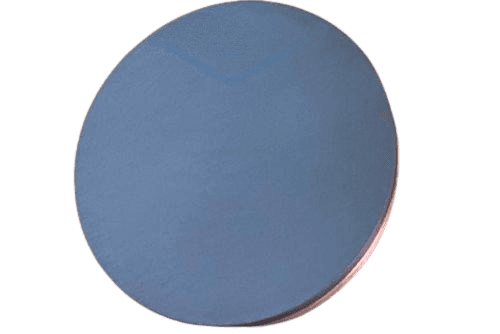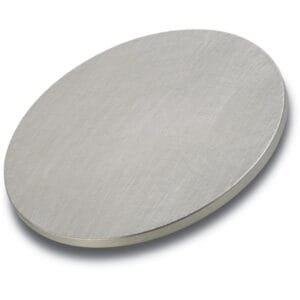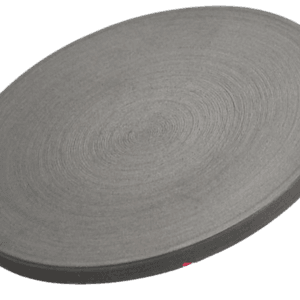LiNi₀.₈Co₀.₁₅Al₀.₀₅O₂ Sputtering Target Description
TFM provides LiNi₀.₈Co₀.₁₅Al₀.₀₅O₂ sputtering targets (commonly known as NCA targets) for advanced thin film deposition applications in battery research and energy storage technologies. These high-purity ceramic targets are optimized for the production of lithium-ion battery cathode thin films via sputtering techniques such as RF or DC magnetron sputtering.
LiNi₀.₈Co₀.₁₅Al₀.₀₅O₂, or NCA, is a layered oxide material featuring high nickel content with minor cobalt and aluminum doping. This composition delivers high energy density, good rate capability, and improved thermal stability. It is widely used in electric vehicle battery cathodes and next-generation solid-state battery architectures.
In sputtering applications, NCA targets provide uniform thin films suitable for research into microbattery development, solid-state battery cathodes, and performance coatings for electrochemical devices.
LiNi₀.₈Co₀.₁₅Al₀.₀₅O₂ Sputtering Target Specification
| Property | Value |
|---|---|
| Chemical Formula | LiNi₀.₈Co₀.₁₅Al₀.₀₅O₂ |
| Common Name | NCA |
| Purity | ≥ 99.9% (3N) |
| Appearance | Gray or black sintered ceramic |
| Crystal Structure | Layered α-NaFeO₂ type |
| Density | ~4.6–4.8 g/cm³ |
| Melting Point | Decomposes before melting |
| Available Sizes | Dia.: 1″, 2″, 3″, 4″ Thick: 0.125″, 0.250″ (custom sizes available) |
| Form | Sintered ceramic target, optionally bonded to backing plate |
LiNi₀.₈Co₀.₁₅Al₀.₀₅O₂ Sputtering Target Handling Notes
Elastomer bonding is recommended for NCA targets to improve mechanical stability and prevent cracking during sputtering.
Avoid rapid temperature changes to minimize thermal stress.
Handle with clean gloves in dry, inert atmosphere to prevent surface contamination and moisture uptake.
LiNi₀.₈Co₀.₁₅Al₀.₀₅O₂ Sputtering Target Packaging
TFM carefully packages all LiNi₀.₈Co₀.₁₅Al₀.₀₅O₂ sputtering targets in cleanroom-safe materials, vacuum-sealed or argon-filled, with outer protective casing to prevent physical or chemical damage. Each unit is labeled with material composition, batch number, and purity for traceability.
Get Contact
TFM offers NCA sputtering targets (LiNi₀.₈Co₀.₁₅Al₀.₀₅O₂) in custom sizes, purities, and bonding configurations tailored to your research or production needs. These targets are ideal for applications in solid-state batteries, thin-film cathode engineering, and electrochemical material studies.
Contact us to request pricing or discuss custom sputtering target options.


 MSDS File
MSDS File



Reviews
There are no reviews yet.